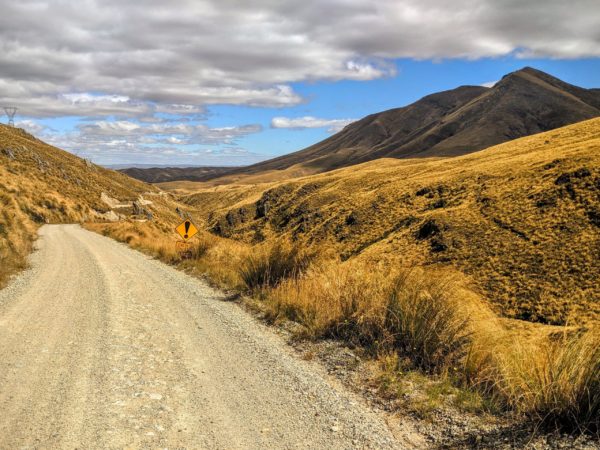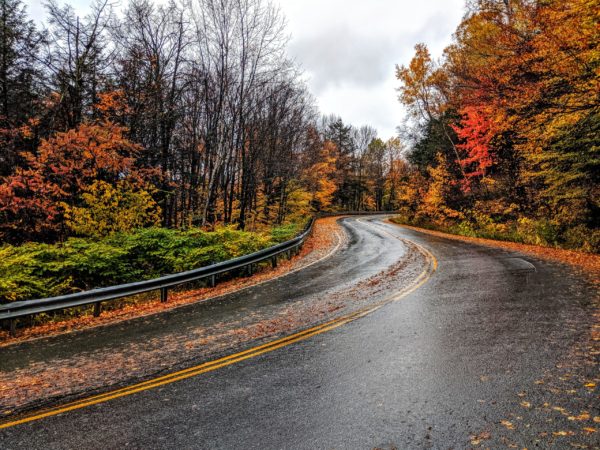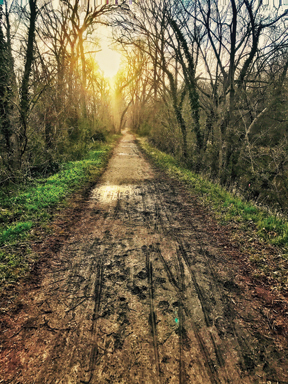
How to ride on rough surfaces
Riding a bike isn’t always smooth, but that can be part of the fun — if you’re prepared! Here’s some advice to help you ride on rough surfaces—from cobbles to gravel to potholes—so you can navigate them with ease.
Gravel
 If you have a gravel or “adventure” bike, you’re in luck! These bikes are built like a road bike, but with slightly different geometry, disc brakes and bigger tires to help you ride on rough surfaces. But if you hit a gravel road and only have skinny tires, the best thing you can do is to stay loose and relaxed.
If you have a gravel or “adventure” bike, you’re in luck! These bikes are built like a road bike, but with slightly different geometry, disc brakes and bigger tires to help you ride on rough surfaces. But if you hit a gravel road and only have skinny tires, the best thing you can do is to stay loose and relaxed.
Try looking for the smoothest line through the gravel. Try to ride where it looks most packed-down, or there are fewer big pieces of rock. The fastest line will be the safest and the smoothest, not necessarily the shortest way through. And while your bike may not have suspension, your body can help you out. Keep your elbows and wrists a little loose. If your body is rigid and locked up, you won’t be able to soak up the bumps as well.
Potholes
Even on nice roads, holes happen. If you see one, try your best to ride around it. But be aware of other riders and traffic. Don’t make a sudden move that other people won’t expect. That could actually create an accident. If you can’t ride around the hole, just hit it and do your best to stay upright. There is probably a bigger chance of causing a crash if you deviate from your line too aggressively.
If you have to hit it, you’re probably going to get a flat. Be prepared for the hiss of air leaving your tire, and be mindful of riders around you as you try to pull over.
Cobbles
If you’re riding in an older city, like in Savannah on our Georgia Gold Coast tour, you’re likely to encounter cobblestones. They look nice in pictures, but they can be really tough to ride over, especially when wet. Get a little momentum to ride over them and get through safely.
Again, keep your upper body relaxed — hands light on the bars, not death-gripping. The stones can really beat you up if you’re not loose. Try to be light and centered on the saddle, but don’t actually stand up, since that might cause you to lose traction.
For a laugh, check out this video of cyclists displaying both good and bad technique on Canton Avenue, Pittsburgh’s steepest street (plus cobblestones!) You’ll even see a couple Wilderness Voyageurs bike tour guides in the mix.
Washboard Gravel

But riding washboard safely is also all about avoiding the worst sections. Washboard gravel is usually worst on the inside-corner of roads where the road is steeper. If possible, don’t corner so close to the curve to find the smoothest line.
Slick Roads

Pavement is usually the slipperiest at the beginning of a rain shower because the oil hasn’t washed off the road.
Railroad tracks
For our rail-trail riders, railroad tracks are a common scourge! Train tracks can be hazardous, even for experienced riders—the gaps between the rails and pavement can swallow your wheel, and wet tracks can cause your tires to slide out from under you.
When you come to the railroad crossing, slow down and ensure there is no train coming. You should never cross when the lights are flashing. Once it’s safe to to cross, position your bike to be perpendicular to the rails—but be sure to look out for perpendicular gaps, as well. When in doubt, get off and walk.
Mud puddles

In general, it’s best to avoid riding your bike in the mud. But that’s not always going to be easy. Sometimes you get out on the trail before you realize that it’s a mudfest. Other times you know it’s going to be a little muddy and it ends up being much worse.
So what to do in the mud? Ride more carefully and slowly than usual, because mud can be really slippery. When you come across a mud puddle on the trail, don’t go flying through. Even more importantly, don’t go around it. You should ride through the mud instead of widening the trail, which is much more difficult to repair than just filling in a hole. By slowing down, you’re less likely to create a big rut in the trail.
If a trail is really muddy, you might want to call it a day and end your ride early. But if you decide to keep riding, it’s important to take it slow and do whatever you can to not damage the trail.
What kind of bike should I ride over rough surfaces?
The most popular rental bikes that we use on Wilderness Voyageurs bike tours have high-volume tires, which are great for riding varied terrain! For riders who prefer a drop-bar bike, we have the Kona Rove NRB. If you’d rather ride flat bars, we have the Kona Dr. Dew, an excellent and comfortable choice for all types of roads!

